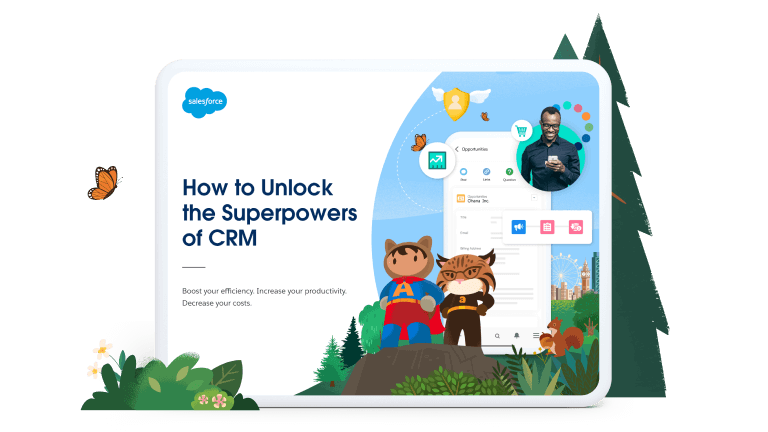
What is a customer profile?
A customer profile provides a business with a composite of what their ideal customer looks like. It takes into account things like demographics, lifestyle and shopping behaviour, as well as wants, needs and preferences.
For example, a customer profile may provide you with information about:
The social media channels your customer uses.
Their age, income and education level.
Their hobbies and interests.
The media they consume.
What they prioritise when making purchases.
What other businesses they patronise.
A B2B customer profile is a bit different. That profile will consider the needs of the entire business, such the size of the company, its pain points and its goals, as well as the preferences of the individual buyers.
The importance of a customer profile
In order to meet the needs of your customers, you need to know who they are, what they want and how they want it. A customer profile can help provide you with that information.
Here are some of the benefits you can unlock by creating a customer profile:
Lower marketing costs, as you can focus on reaching your ideal customer on the channels where they spend their time.
A more effective sales process, as you reduce the amount of unqualified traffic and go-nowhere leads.
Better messaging, as you can craft personalised communications that connect, inform and inspire – all catered towards what your customer cares about most.
More successful products and services, as you can develop your offerings around your customers.
Better customer service, as you can offer support on your customer’s preferred channels.
Identify and solve customer pain points to create a better customer experience stand out from your competition.
These are just some of the positives of knowing your customer. To put it simply, without having a view of your customer, your business is flying blind.
How to build a customer profile
Gather information
Trustworthy information is the bedrock for smart decision-making. When creating a customer profile, you’ll want to gather as much information as possible. In order to do this, you’ll want to leverage both internal data and external data from the marketplace.
Here’s where to start:
Use market research to gather data. Have a look at trends in your market – and who’s driving them. Consider things like pricing, functionality and messaging. Have there been any new shifts in customer expectations that you can identify?
Analyse existing data from transactions and interactions. Analyse the data you have in your CRM. Look at what It can tell you about demographics and customer behaviour. Do your high-value or most loyal customers share traits?
Use customer feedback from surveys and social media. Deploy surveys to measure your customer experience and ask for suggestions for improvements. Create a social media presence on the channels your customers use most. Solicit feedback and give your audience a sounding board for their opinions.
Evaluate your online reputation. See what customers and would-be customers are saying online. Do you notice common behavioural or demographic factors in your advocates or your detractors? This information will not only help you develop a customer profile, but can also help to improve products and services.
Track the competition. Your competitors are trying to capture the same customer profile. Analyse their approach to marketing, sales and more. Look at the type of customer they’re targeting – and how and where they’re doing it. Can you do it better?
Analyse the data
Organise the data into relevant categories. Once you’ve gathered data, you’ll want to organise it into categories. Look at transactional data, behavioural data, socio-demographic data and psychographic data (how customers think and feel).
Determine the needs, preferences and behaviour of your target customer. Once you have a good idea of how your customer behaves, you can determine how, when and where to reach them – and with what offer.
Create the customer profile
Use your data to create a detailed profile. If your data shows you that you have a different customer for different offerings, then create a profile for each. Include demographics, pain points, motivations and purchasing habits.
Leverage the profile
Use the profile to turbocharge your marketing and sales strategies. Align your marketing and sales strategies with the needs and behaviours of your customer. Is your USP (unique selling proposition) positioned properly? Are you using the right channels and in the most impactful way? Are your offers relevant?
Evaluate whether your customer profile can help improve your service. For instance, are you providing the right customer service options at the right touch points? Some customers want to be able to chat with a rep through social media channels, while others prefer to solve their own problems through knowledge bases or chat bots. See if your customer profile can help you provide more personalised service.
Tailor products and services to the needs of your customer. A customer profile is a pillar of successful marketing and sales activities. But it can also be used to develop new products or improve existing ones. Use your customer profile to brainstorm new possibilities. You never know where the profile might take you.
Use the customer profile to create a frictionless CX (customer experience). Creating an exceptional customer experience that aligns with the expectations and preferences of your customer not only makes purchasing easier; it drives loyalty and positive word of mouth. Use your profile to hone your CX, ensuring that you’re making the most of upselling and cross-selling opportunities.
Update and refine the profile
Regularly review and update the customer profile as needed. Customer behaviour will often change as the marketplace, lifestyles and technologies change. Review your customer profile at regular intervals, ensuring that it’s still accurate.
Run A/B tests with various messaging, then hone the profile to leverage responses. Craft different messages highlighting different aspects of your product or service. See which drive the most engagement, and update your customer profile with the messaging preferences.
Track any changes in customer behaviour. Are new concerns emerging? For example, is price becoming more of a primary driver in a tough economic climate? Are CSR (corporate social responsibility) and brand values becoming more important to your customer? These changes in customer priorities should be reflected in your sales and marketing strategies.
Ready to use your customer profile to build long-term relationships?
Once you’ve locked in on your ideal customer, you can lower your customer acquisition cost, create an exceptional customer journey, and streamline your sales and marketing to cut wasteful spending. Better yet, you can develop new products and services that win customers for a lifetime.
If you’re ready to maximise your business’s resources and build better relationships, check out our guide to unlock the superpowers of your CRM.










